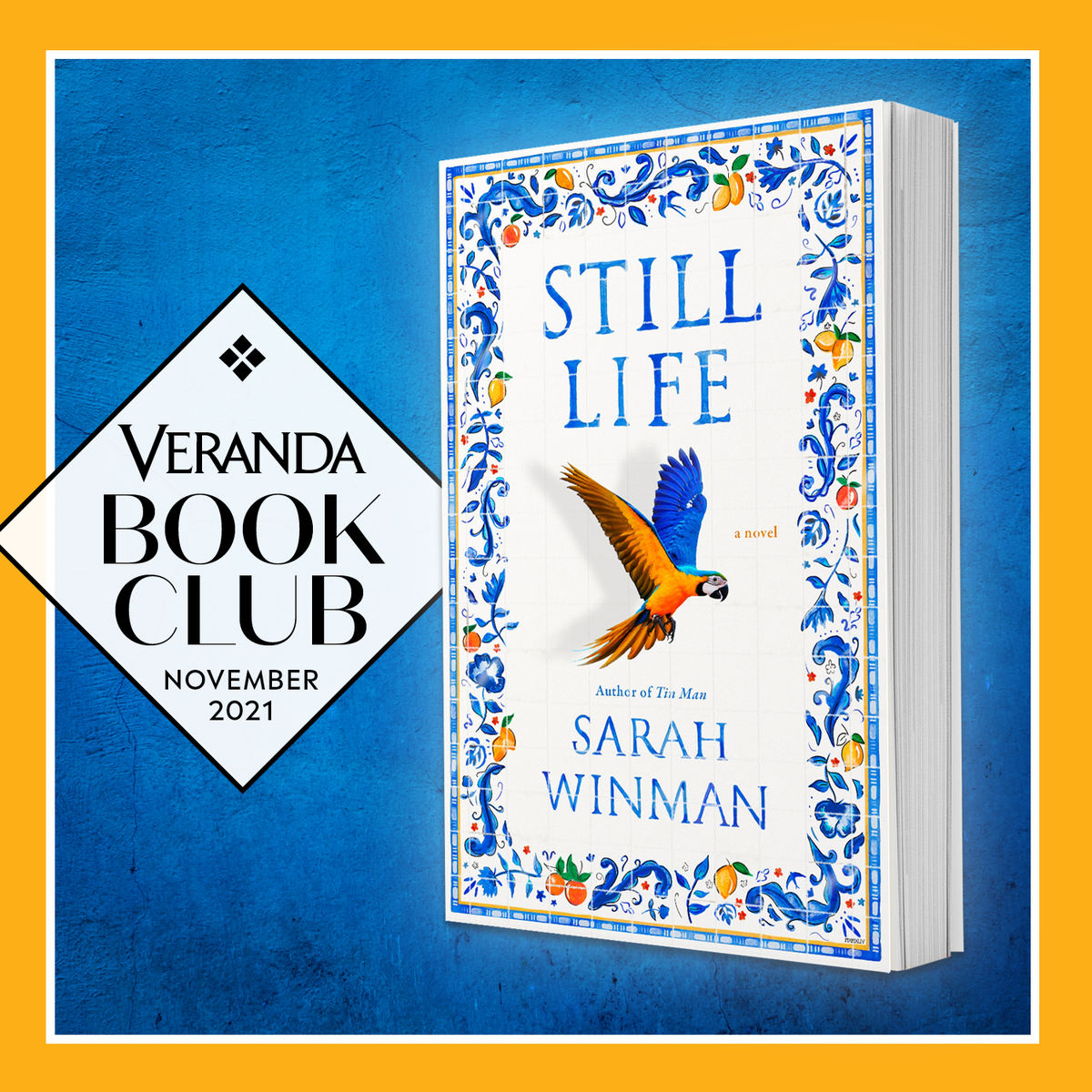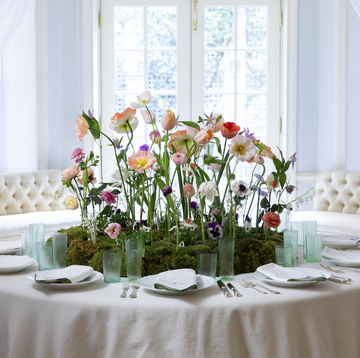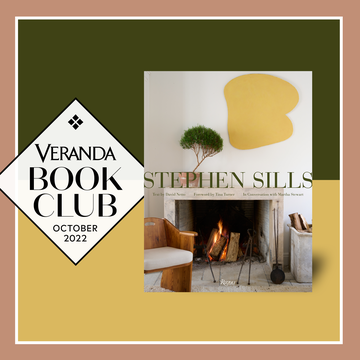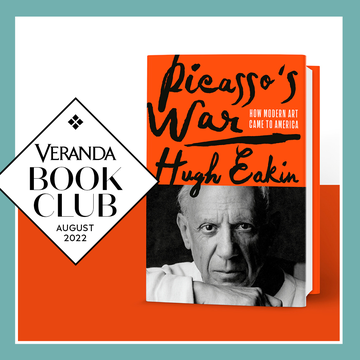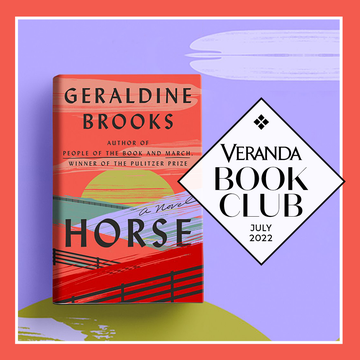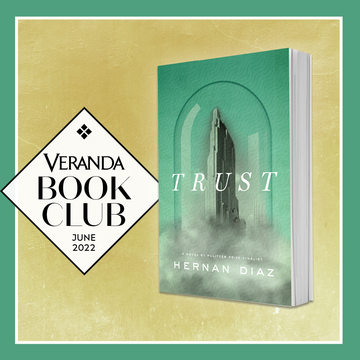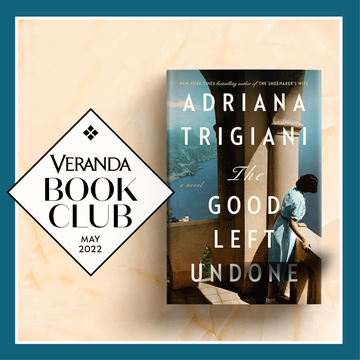Welcome to the VERANDA Sip & Read Book Club! Each month, we dive in to a book and offer exclusive conversations with the authors behind each tale, along with a perfectly matched cocktail. This month's pick is Sarah Winman's, Still Life, a newly released novel focusing on the importance of found family and how art can connect people of all backgrounds. Get caught up on our past book club selections here.
It's 1944 during the height of the World War as Allies troops advance across Italy. Young, English soldier Ulysses Temper finds himself taking shelter in a deserted Tuscan wine cellar surrounded by treasured artwork as bombs fall above ground. To his surprise, he meets Evelyn Skinner, a 64 years old art historian who came to Italy to save these paintings from destruction. During their short time together, Evelyn imparts wisdom to Ulysses that shapes the way he views love, life, and art for the rest of his life.
In the pages that follow, Sarah Winman's Still Life examines how art and beauty can connect the a diverse casts of individuals to create their own found family. Here, Winman delves deeper into what inspired her masterful new novel and why she included the ghost of E.M. Forster in the work.
More From Veranda

What was it about Florence that inspired you to make it the setting of this novel?
Sarah Winman: The truth is, I had no intention of writing about Florence! I thought there were probably enough books written about Florence already. It was when I was visiting the city in 2015 and learned about the flood of November 1966. or more importantly, the role of the young men and women who came to the city to clean up afterwards–that the story found me. These young people became known as Mud Angels. They cleaned monuments and paintings, and some fell in love and stayed in the city. That was the part of the story that I found romantic, and which was to sit centrally in my book for a long time until other ideas developed.
What was research like for this book? Are Evelyn and Ulysses based on real figures in history?
SW: No, Evelyn and Ulysses are not based on anyone in history. But because E.M Forster is a character in the last section of the book, I wanted the feeling that maybe more of the characters actually existed in real life. For instance, many people have asked me whether or not the poet Constance Everly was real. She’s not.
Research was wonderful in many ways because it meant that I went backwards and forwards to Florence. Over two years I went about six times–and once for a month in January. I’d been introduced to a wonderful art historian by then called Stella Rudolph. She’d been one of the original Mud Angels and had stayed on in the city, fell in love, married. I followed her around with a notebook and saw the city through her eyes and absorbed her way of life. She was indispensable.
Also, I read heaps of books–from Arnold Bennett’s Florentine Diary to E.M Forster’s letters to Frederick Hartt’s Florentine Art Under Fire to Norman Bryson: Overlooking the Overlooked/Four Essays on Still Life Painting. Research was really joyful.
Speaking of characters, this book has quite a theatrical cast. How do you go about writing a large ensemble? What were some of the challenges?
SW: Because I don’t plot my books, I had no idea I was writing a large cast. It was very much a page at a time, a character at a time. And even though there are quite a few characters, there are still two main protagonists who carry the story. Every scene (except a couple at the beginning which are establishing scenes) contains either Ulysses or Evelyn. They are the ones driving the narrative.
I also imagined many scenes as if I was filming them rather than writing them. That cinematic quality made me see where the focus should be at any particular time. That was extremely helpful in negotiating the big ensemble moments.
E.M. Forster plays an important role in this novel not only as a character but also as inspiration. How did Forster’s A Room With a View influence your work?
SW: A Room With A View has always had a place in my heart, but, as a film first. That’s because when I was a young actor, my first agent Julian Belfrage had three major stars in the film, and so it became quite a talking point whenever we met.
And then when I read the book, I realized what different beasts the two mediums represented. The book is so much darker. More emphasis on art and class and who has the right of commentary. There’s also a queer sensibility that runs through it which I love. (For those who don’t know, Forster was gay at a time when homosexuality was illegal).
In the paperback copy of A Room With A View, there were notes that revealed the Pensione Bertolini was actually the Pensione Simi in real life, and did have a Cockney landlady. I was intrigued. What was this boarding house like? Who stayed there? I then began to read Forster’s letters about his year-long trip to Italy with his mother in 1901, which became the catalyst for two of his novels. It was fascinating and joyous and he was so self-deprecating and witty that I came to love him as a ‘character’. And without really setting out to do this, I started to write scenes of Evelyn meeting up with Forster - this glorious young lesbian who was free and enjoying her first sexual adventure in stark contrast to Forster’s hidden queerness.
Still Life masterfully looks at the complicated relationship between art and class. What would you say to someone that feels art or rather the art world is out of reach for them?
SW: I think that the art world has set itself up over time to exclude people, especially women. As has certain aspects of literature. It’s snobbism. It’s a construct. The – “If you’re not educated enough, or don’t know enough, then you shouldn’t be trespassing, kind of thing.” That’s a lot of rot. Art galleries are democratic spaces. Everyone has the right to enter.
There’s no need to know anything before you step foot inside. You just go in and stand in front of a painting and see what you notice about the picture and the response you have to it. Also, many national art galleries have organized walk-throughs whereby you join a group (for free) and are taken around and told about the more famous pictures. I think this, too, is a good way to start.
Let’s also note that there are many more ways to view art today, including online arenas.
All of this is also dependent on someone having a desire to enter this realm. Some people don’t, and that, too, is valid.
In the most poignant way, Still Life celebrates love—the love of family, the love of romance, and the love of art. What inspired you to write about found family?
SW: I always tend to write about found-family.
I was lucky to grow up with parents who had strong friendships. Christmas’s were often spent with friends, and many families joined us on holiday.
Also, I came out as gay in the early 80’s which was a tough time to be gay. I had family support, but I knew many people who didn’t, and so we created our own family back then. It was a generous, supportive and a loving way to live.
Sarah DiMarco is the Assistant Editor at VERANDA, covering all things art, design, and travel, and she also manages social media for the brand.
